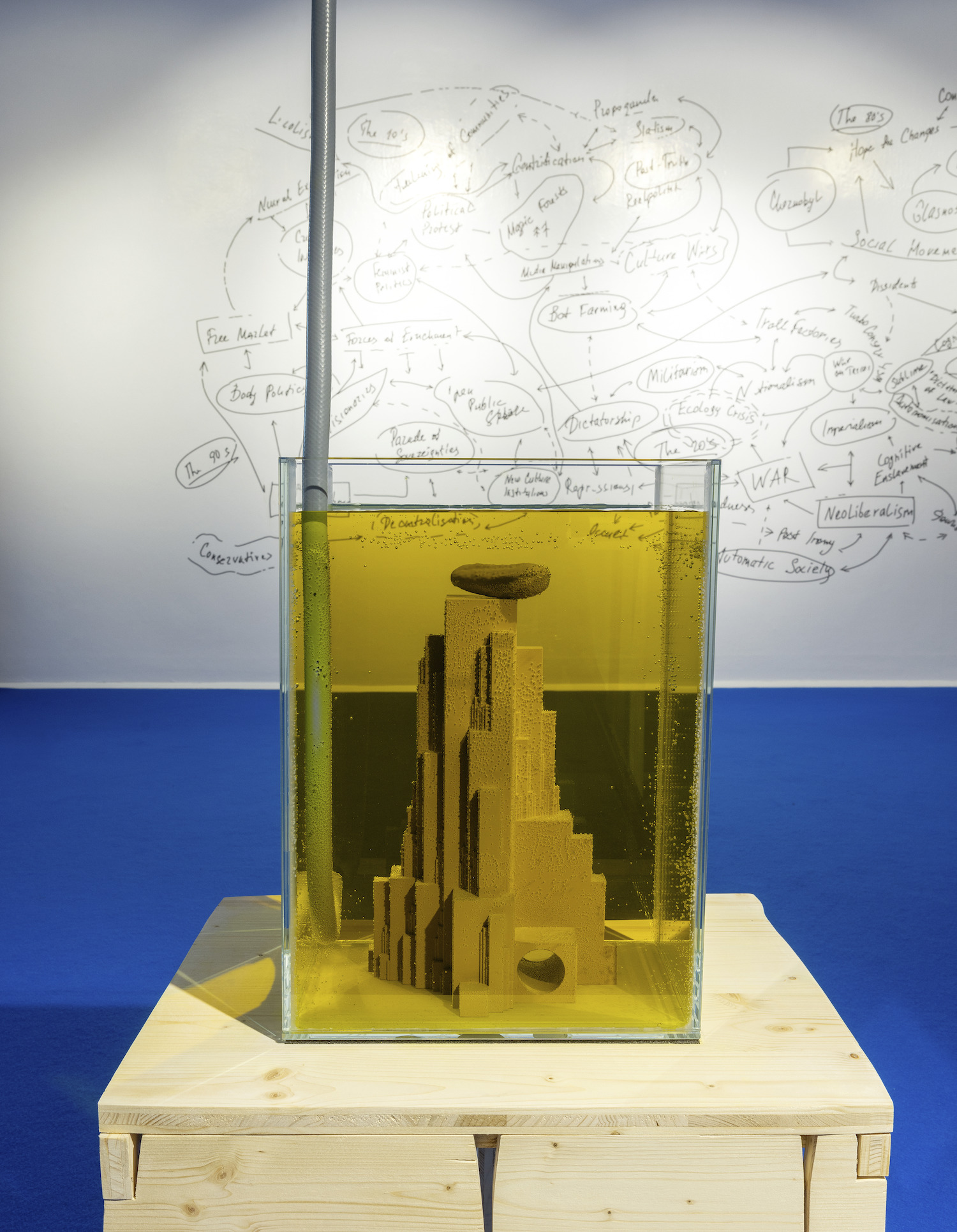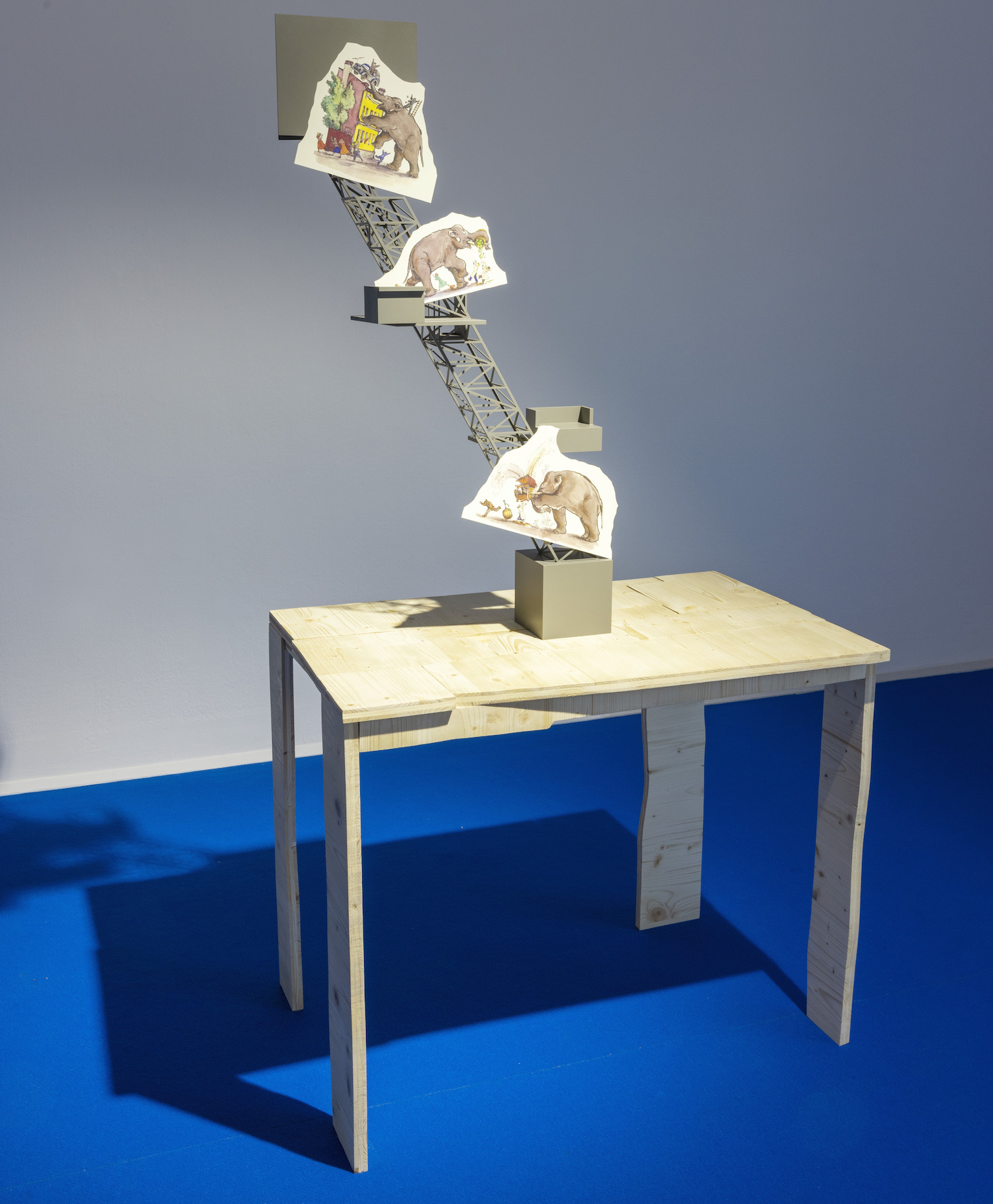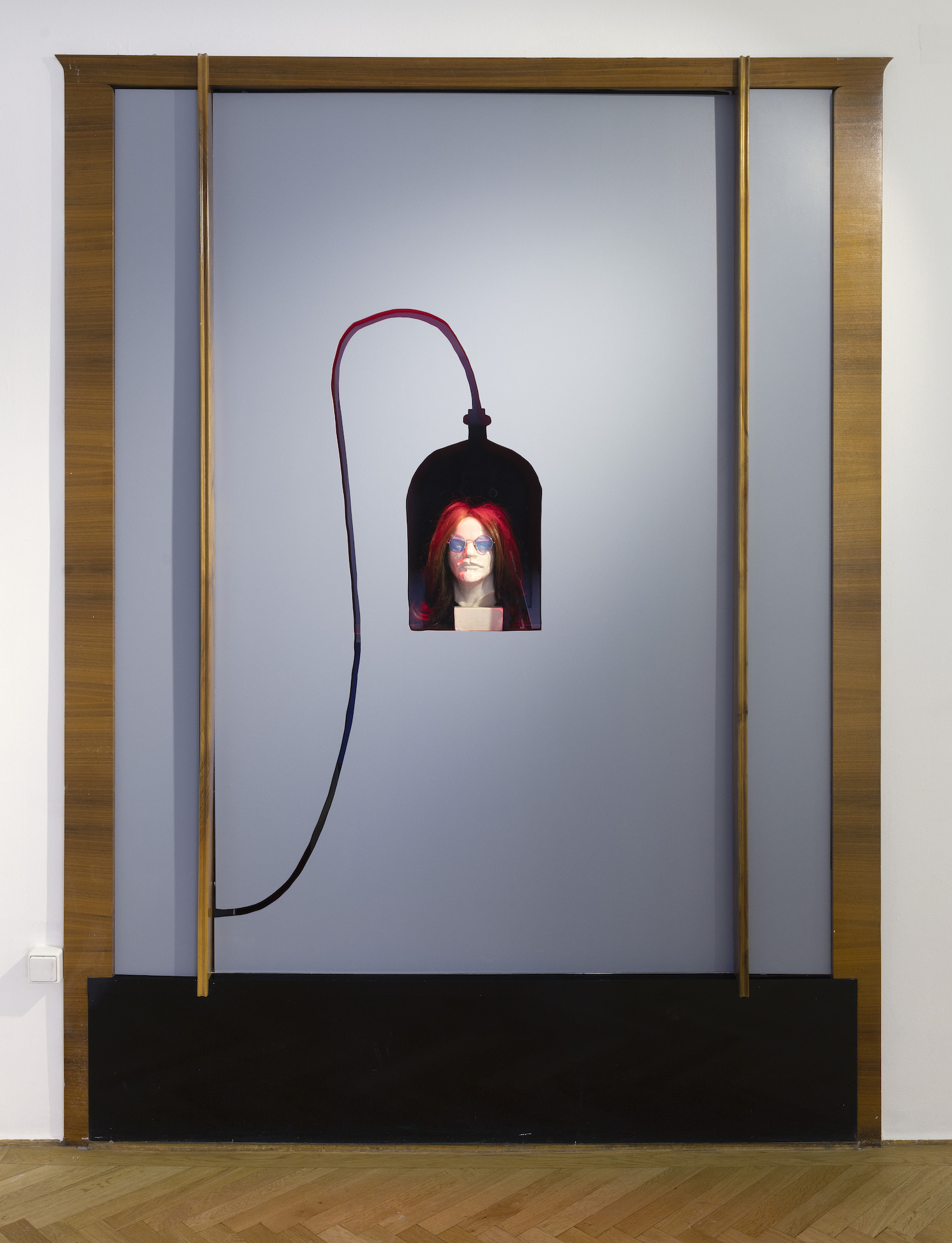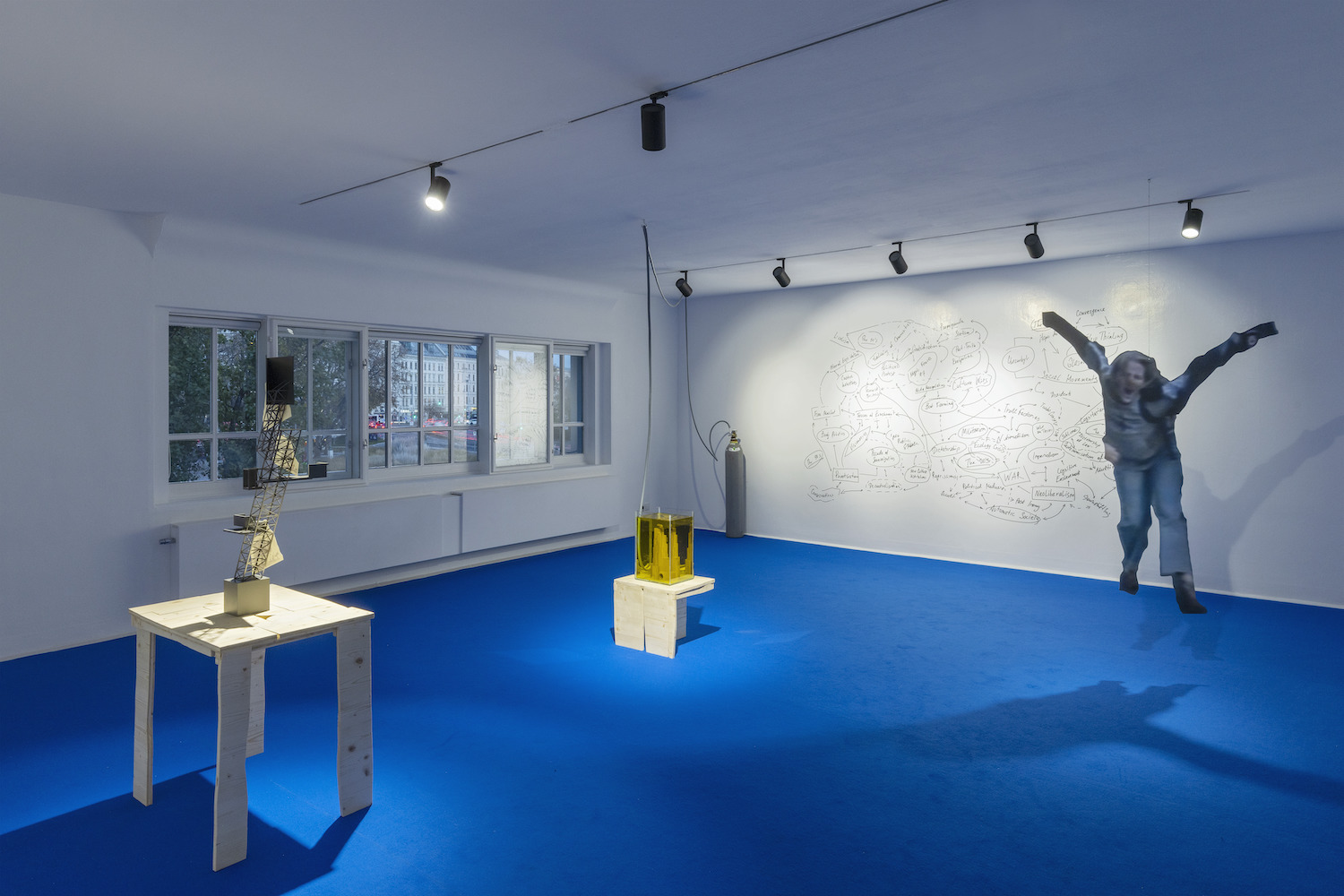Search
To search for an exact match, type the word or phrase you want in quotation marks.
A*DESK has been offering since 2002 contents about criticism and contemporary art. A*DESK has become consolidated thanks to all those who have believed in the project, all those who have followed us, debating, participating and collaborating. Many people have collaborated with A*DESK, and continue to do so. Their efforts, knowledge and belief in the project are what make it grow internationally. At A*DESK we have also generated work for over one hundred professionals in culture, from small collaborations with reviews and classes, to more prolonged and intense collaborations.
At A*DESK we believe in the need for free and universal access to culture and knowledge. We want to carry on being independent, remaining open to more ideas and opinions. If you believe in A*DESK, we need your backing to be able to continue. You can now participate in the project by supporting it. You can choose how much you want to contribute to the project.
You can decide how much you want to bring to the project.

Denis Maksimov, in conversation with the Agency of Singular Investigations (Stanislav Shuripa and Anna Titova).
Denis: Your installation On New Thinking And Other Forgotten Dreams in the Secession in Vienna alludes to escaping the conventionality of accepted space-time. Could this be the time for a new category of imagining futures to emerge?
Anna Titova: On New Thinking and Other Forgotten Dreams is a meeting point, perhaps a playground for various historical temporalities. Every now-moment is full of images of other times, of real and virtual traces of many flows of events that took place or were imagined, presumed, from unhappened futures and pasts. The present time is full of these weak, erased and unlived kinds of time.
Stanislav Shuripa: Both utopia and dystopia look like just elements of this multilayered, dynamic, plateau-like planetary ‘now’ that feels more like a geological period than an eyeblink. One of the critical motives in our work is the idea of liberation of multifaceted potencies of this extended field of the present. We do it by interrelating three kinds of realities: that of narrative, that of objects, and viewer’s experience.
D: I like the term “bureaucratic magic”, which you often use in describing your work. Could you elaborate on its meaning concerning your work in the Secession and practice in general?
AT: One of the sources of inspiration for us is the ability to transform reality and produce and annihilate things sheerly through the power of bureaucratic discourse. Words produce documents; documents produce facts. Bureaucracy is strange because it is where maximal rationality turns into unconscious force, and technics turns into magic. Our work is not alien to observing and analyzing this magic of language and narrative. We create the conditions in space for viewers to see how this magic works and let viewers perceive it through our aesthetical choices.
SS: Reason and unreason meet in a bigger space of what can be called institutional imagination. Bureaucratic magic, as we call it, is an extreme case of this kind of imagination. Every institution, big or small, stable or ghostly, has its place, even if this place is in the heads of its members. Such places form the actualized part of the larger space of the institutional imaginary. This kind of collective imagination force is characteristic of our times. What is an institution? A place —however fictive or abstract— and repetitive interactions according to some rules. A passage between memory and expectations, between inside and outside. Bureaucracy is art’s other in that both work with linguistic magic.
D: The project in secession is part of the series of Agency’s investigations into dramatic changes in the Russian state’s official language and communications, what you call “a mix of propagandist hysteria and bureaucratic discourse.” What other instalments do you plan to make in the future?
AT: What we’re interested in is how communications assemble reality by binding together fragments of material, imaginary, virtual, and other dimensions. This brings to life entities of a strange kind: semi-real post-phantoms that reveal themselves in the social, political, and psychological. These quasi-subjects mutate and evolve by imbuing bureaucratic forms with energies of mass identifications channelled by digital networks. Without special optics, such dark matters aren’t visible, only some side effects and shadows: they might look like psycho-social aberrations, sudden collective stupidity, or the madness of power.
SS: We’re exploring activities in the grey zone between fact and fiction. They are assemblages of languages, bodies, institutions, phantasies, phobias, and other elements. Language mutations are signs of psycho-historic shifts. Now, we are working on a project of something like a theme park that would reconstruct psycho-historical forces and events of several decades, mapping what can be called a permanent cognitive revolution and a counter-revolution.

D: The diagram Lavender Mist of History on the wall in the space is reminiscent of the anxiety of a confused intellectual lost in self-referentiality and loops of meaning while trying to understand reality. Can that be an overall diagnosis given to contemporary theory?
SS: Lavender Mist of History is a diagram of psycho-historical forces that formed idea-scapes since the beginning of Perestroika, a wave of democratic reforms in the late 80’s, before the collapse of the Soviet Union. It’s a map of the history of ideological actor networks, time as space of flows. Instead of laws of history —masquerade of spectres, the collision of bubbles, murmuring whispers of a pickle who unfolds recent history as a story of descent and corruption of Perestroika’s liberatory impulse, it refers to the title of an abstract painting by Jackson Pollock and to the eerie atmosphere of those times stuck between the horrors of the Second World War and the anxieties of the beginning of the Cold War. History is a suffocating cloud; this feeling is characteristic of our times, as well.
AT: Every piece included in the exhibition comes out of a time rift. Objects can contain both utopian and anti-utopian, experience and hope, various pasts and futures. Such mosaic temporality might induce confusion, especially at the beginning. Disorientation is a noticeable element of the spirit of this transitional age. The world has changed its technological form from the discourse-produced reality of the classical postmodern era to surveillance capitalism object-oriented reality ruled by algorithms.
D: It seems that many in Russian society started withdrawing into “internal” or “psychological” exile —ignoring the news, trying not to follow the agenda, and remaining ‘small.’
AT: Becoming a ‘small person’ is a widespread strategy for coping with disasters. Often, people don’t think that they have chosen this position voluntarily. On the opposite, some think that “it’s time to turn onto yourself” and “discover” something “inner” and unnoticed. It’s like a psycho-economy of enrichment but under sanctions. Indeed, it is the proper environment for the reincarnation of this classical form of life under autocracy ‘small person’. It is often the only way out, and making yourself visible or heard is dangerous. Initially, the ‘small person’ was a figure invented by 19th-century Russian literature to speak of the indiscernible and subaltern forms of life, about poor and alienated people, those who were part of the system but didn’t have their face or voice in it.
SS: It is not exclusively a local character; you can find it everywhere. Today, it’s part of the silent majority, an e-present mass hiding behind avatars, usernames, and IP addresses. Troll factories and post-truth are just the most visible effects of anonymous telepresence in this social black hole. ‘Small person’ is nearly nobody and yet almost everybody —what remains of the Soviet mega-project of production of a new socialist mind. There are figures of this kind in many works of artists from the circle of Moscow Conceptualism, an essential movement in underground art of late Soviet times.

D: Towards the New Flat Earth could be seen as a satirical yet realistic possibility of the inglorious return to political pre-modernity. Do you think that some of the existing, primarily left-wing, allusions towards a ‘return to nature’ can be seen as weirdly allied with this right-wing conservative utopia?
AT: Language produces everything: time, space, subjects, objects. Today, linguistic production is much larger, and yet it has become something habitual. Social, political, and economic reality is produced by many discourses, from science and state to private speech amplified by digital networks. We are used to linguistic production and take it for granted. However, the times are changing. A new level of the power of language brings a new reality where what used to be language products become autonomous and impose themselves on what they can reach.
SS: We enter a new phase of reality with weakened general laws and more voluntarist objects. Each of them forms its little universe with local rules. Simulacra becomes real and starts hiding from the observer, leaving only their qualities in view. There are many ‘natures’: some are from pre-Anthropocene, the industrial revolution suppresses some, and some are uninhabitable. Towards the New Flat Earth is developed in one of our recent projects as a part of yet another version of nature where accelerationism meets turbo-conservatism.
D: Apart from your practice, you both play an instrumental role in the Institute of Contemporary Art, perhaps the leading institution for contemporary artists’ education in Russia. As the grip of censorship in the country becomes tighter daily, how do you see it reflected in students’ work?
SS: I should first introduce the Institute of Contemporary Art. It is an independent artist-run educational program founded by artists from the circle of Moscow Conceptualism right after the collapse of the Soviet Union. For decades, it was led by Joseph Backstein; the main space for the classes was the former studio of Ilya Kabakov, a cult place for Moscow’s underground art scene since the 70’s. Anna and I graduated from the school and have taught there for a long time. I’ve been giving direction to it for several years after Joseph resigned.
AT: It’s not easy to be critical of what’s going on if you’re there because you’ll be jailed for years. And yet, there’s a lot of energy among young artists; there are many self-organized events and quite a few small spaces organized by young artists. The contradiction between madness from above and social energy is striking. To facilitate it a bit, since 2022, we have turned our former ASI exhibition space into something like a workshop or laboratory, a safe space for young artists to meet, talk, and experiment with their practice.
SS: Art has become the last bubble of fresh air for many. There’s a growing sense of involvement, even enthusiasm from students and young art; it creates a great atmosphere. Most classes are online since many students and teachers have relocated to other countries, so there’s a serious degree of deterritorialization.
Facing censorship and repressions, I think it’s crucial to retain the system of professional relations that can work now as a common platform for critically thinking artists and could later become one of the starting points for rebuilding the sphere of cultural production. It’s probably best done by going underground, to the situation where works are shown and discussed within narrower circles of artists and friends.


(All images: Agency of Singular Investigations, On New Thinking And Other Forgotten Dreams, Installation view, Secession (Vienna, Austria), 2023. Photos: Lisa Rastl)

Denis Maksimov is an art historian and cultural critic. He is a Foyle Curator of Exhibitions and Public Programming at Pushkin House and a Lecturer at the Institute of Contemporary Art. He runs the Lecture Performance Archive, an interdisciplinary research project, and co-founded Avenir Institute, an artistic think tank.
"A desk is a dangerous place from which to watch the world" (John Le Carré)